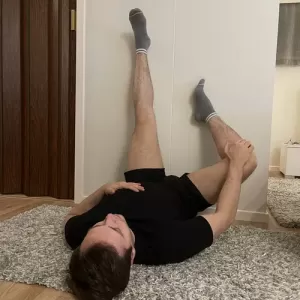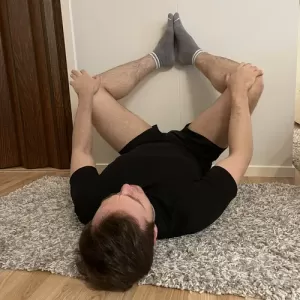Mastering Gracialis Stretch: 3 Exercises to Improve Hip Function
Stretching is an essential component of any fitness routine, and it is especially important for the gracialis muscle.
The gracialis is a long, thin muscle that runs from the pelvis to the inner thigh and plays a crucial role in hip and knee functionality.
In this article, I will discuss why stretching is essential for the gracialis muscle, how to achieve gracialis stretch and the benefits of having flexible gracialis.
Gracialis Stretch Guide
Here are few exercises to help stretch the gracialis muscle:
Butterfly Stretch
Assume a seated position on the floor with your knees bent and the soles of your feet touching each other. Grasp onto your ankles and gradually apply pressure to lower your knees towards the ground.
Supine Wall Stretch
Lie on your back with your legs straight up on a wall. Slowly lower one leg to the side while keeping the other leg straight. Then, push your knee with your hands toward the wall. Hold for 30 seconds and then switch sides.
Supine Wall Stretch With Knee Flexion
Assume a supine position and place both legs against a wall, bending your knees to a 90-degree angle.
Gently push your knees towards a wall with your hands and hold for 30s.
Function of Gracialis
When you walk or run, the gracialis contracts to pull your legs together and help stabilize your hip joint.
This motion is essential for maintaining proper gait and balance.
This muscle is involved in hip adduction.
The gracialis muscle also assists in internal rotation of the hip joint. This means that it helps to rotate the femur bone inward, which is an important movement when you take a step or change direction.
When the gracialis muscle is tight or weak, it can lead to imbalances in the hip joint and affect your ability to walk, run, or perform other activities.
Additionally, the gracialis muscle is closely linked to the other adductor muscles of the hip, which work together to stabilize the hip joint and improve its functionality.
The adductor muscles include the adductor magnus, adductor longus, adductor brevis, and pectineus muscle, and they all play a crucial role in hip stability and mobility.
Benefits Of Stretching Gracialis
Stretching the gracialis muscle can lead to several benefits, including improved hip and knee flexibility, increased range of motion, and reduced risk of injury.
When the gracialis muscle is tight, it can place extra stress on the hip and knee joints, leading to pain and discomfort.
By regularly stretching the gracialis, you can help reduce the risk of these issues and improve your overall mobility.
Conclusion
In conclusion, stretching the gracialis muscle is an essential component of any fitness routine, and it can help improve hip and knee functionality, reduce the risk of injury, and increase the range of motion. By following the exercises outlined in this article, you can start to incorporate stretches for gracialis into your daily routine and reap the benefits of having a more flexible and healthy body.



